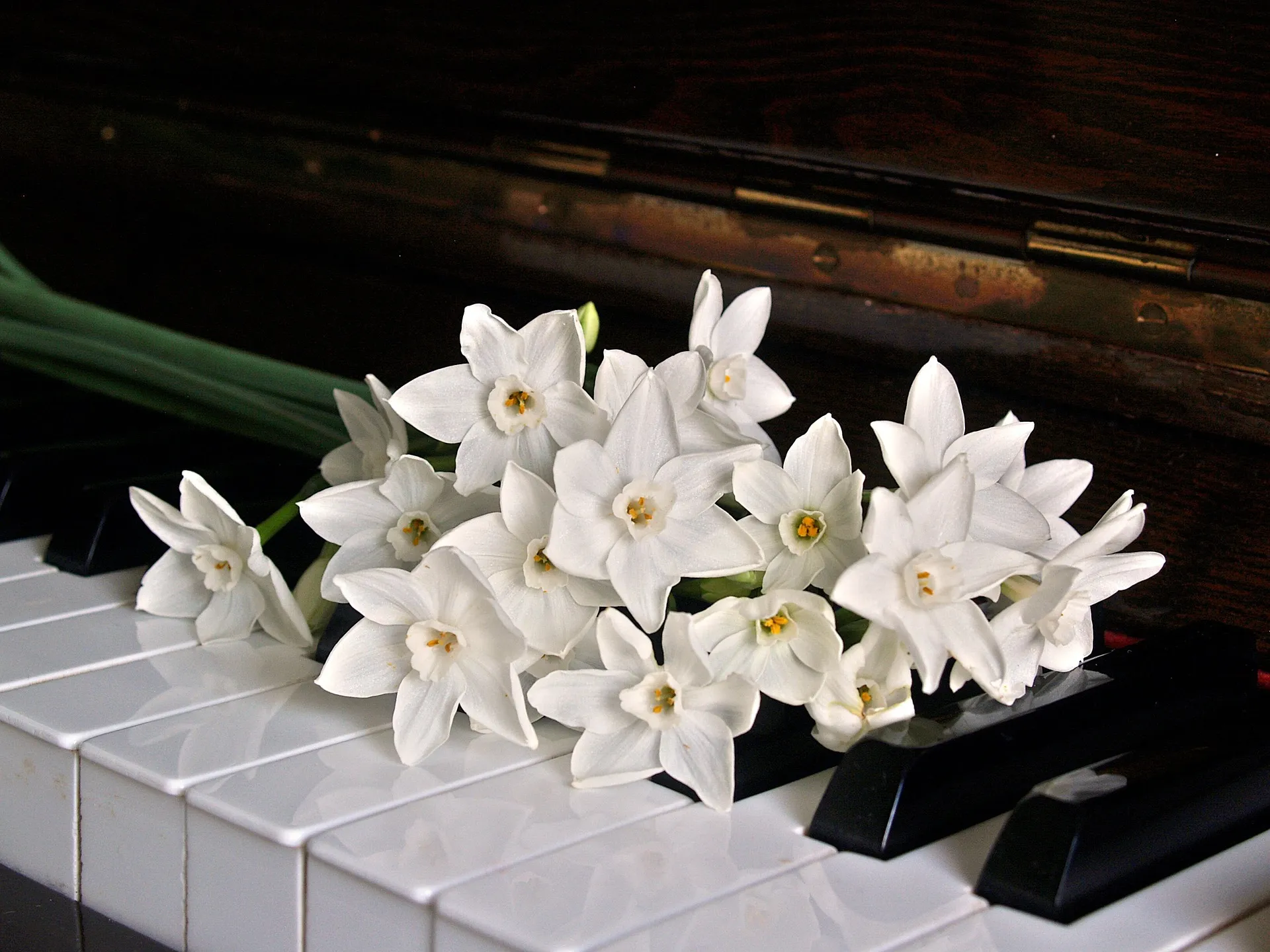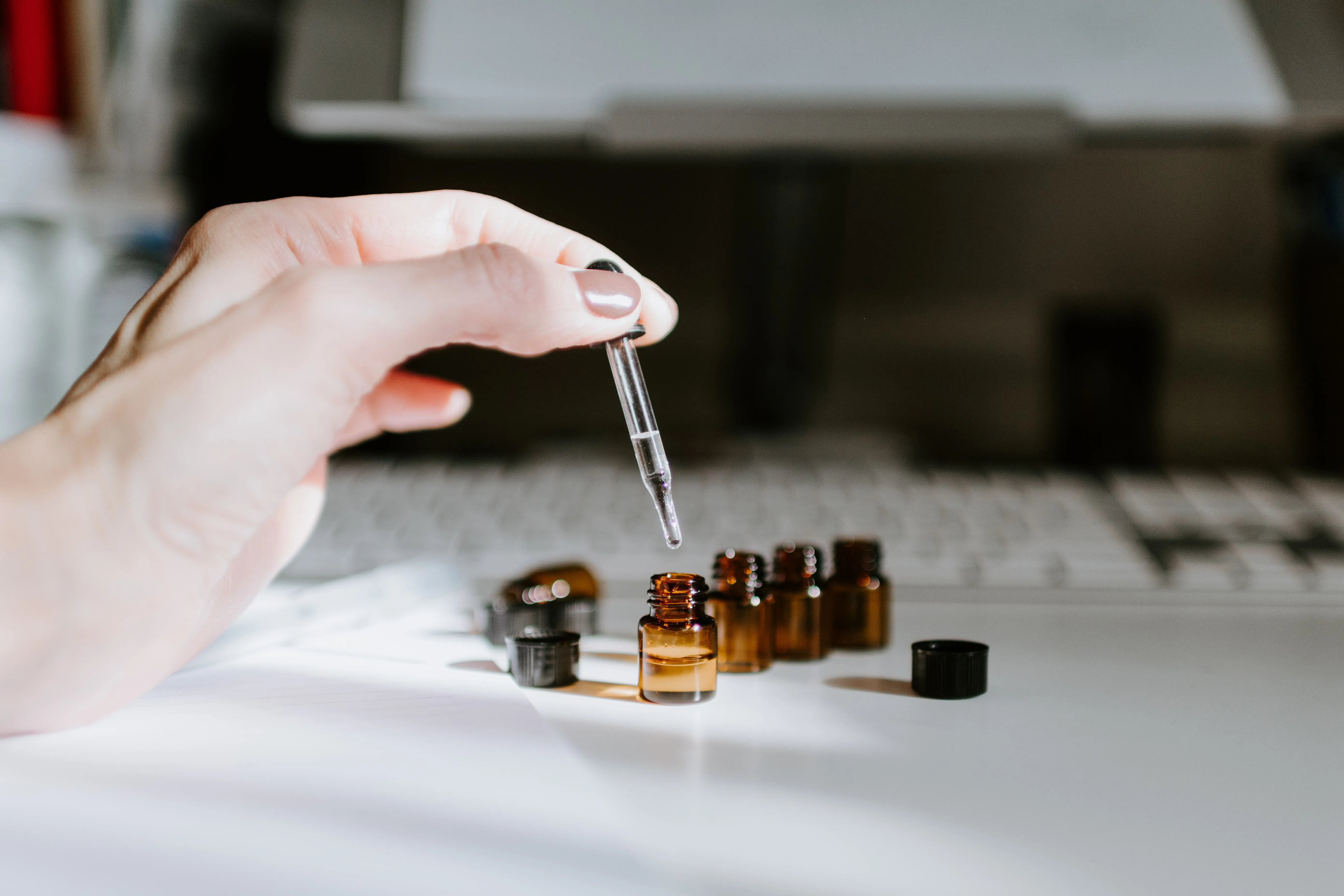The Harmonious Symphony of Essential Oil Tones
Let's explore the secrets of top, middle, and base notes of essential oils.
Essential oils are highly concentrated plant extracts that are used for various therapeutic and aromatic purposes. They are known for their wide range of scents, which are often classified into different "notes" or "tones" based on their aromatic qualities.
The concept of essential oil tones is somewhat analogous to the musical scale, where there are three primary categories: top notes, middle notes, and base notes.
These notes are used to describe the volatility and evaporation rates of essential oils, as well as their overall aroma profiles.
Essential oil notes:

Top Notes:
- Top notes are the most volatile and tend to have a light, fresh, and uplifting aroma.
- They are the first scents you detect when you initially smell an essential oil or fragrance blend.
- Top notes often have a quick evaporation rate and can be more fleeting in their aroma.
- Examples of top note essential oils include lemon, bergamot, eucalyptus, and peppermint.
Middle Notes (or Heart Notes):
- Middle notes are the scents that emerge after the top notes have dissipated but before the base notes become dominant.
- They provide body and balance to a fragrance and are often considered the "heart" of a blend.
- Middle notes are often softer and more rounded in aroma compared to top notes.
- Examples of middle note essential oils include lavender, rosemary, and chamomile.
Base Notes:
- Base notes are the least volatile and have a rich, deep, and long-lasting aroma.
- They form the foundation of a fragrance and can help to anchor and fix the scent.
- Base notes typically have a slow evaporation rate and linger for hours or even days.
- Examples of base note essential oils include cedarwood, patchouli, and sandalwood.
When creating essential oil blends, perfumes, or aromatherapy recipes, it's common to use a combination of top, middle, and base note essential oils to achieve a well-balanced and harmonious fragrance. This layering of notes creates complexity and depth in the overall scent.
Keep in mind that individual preferences and sensitivities to aromas can vary, so experimenting with different combinations of essential oils and notes is essential to finding the right fragrance for your desired purpose, whether it's for relaxation, focus, mood enhancement, or other therapeutic benefits.
Additionally, proper dilution and safety precautions should be observed when using essential oils, as they are highly concentrated and can cause skin irritation or other adverse reactions if not used appropriately.
The tones of essential oils

Identifying the tone or note of an essential oil involves considering its aromatic qualities, volatility, and its role in a fragrance blend. Here are some steps to help you identify the tone of an essential oil:
- Smell the Oil: Start by taking a moment to smell the essential oil. Note the initial impression and overall scent.
- First Impression: Pay attention to the first scent that reaches your nose. Is it light and fresh, or is it deep and earthy? The initial impression can give you a clue about whether it's a top, middle, or base note.
- Duration of Aroma: Observe how long the scent lingers in the air or on your skin. Top notes typically have a quicker evaporation rate and disappear sooner, while base notes have a longer-lasting aroma.
- Fragrance Complexity: Consider the complexity of the aroma. Middle notes often have a balanced and harmonious scent that bridges the top and base notes.
- Comparison with Known Notes: If you're unsure about the note of an essential oil, compare it to other essential oils with well-established notes. For example, if the scent is similar to lavender or chamomile, it's likely a middle note.
- Consult Reference Materials: There are many reference books, online resources, and aroma wheels that provide information about the notes of essential oils. These resources can help you identify the note of an unfamiliar oil.
- Experiment: You can also experiment by blending the essential oil with others to see where it fits best in a fragrance. For instance, if it blends well with other top notes and has a refreshing scent, it's likely a top note.
It's essential to keep in mind that the classification of essential oils into top, middle, or base notes is not an exact science, and there can be some variations and differences in opinion.
The aromatic qualities of an essential oil can be influenced by factors like the plant's growing conditions, the extraction method, and individual perception.
By using your sense of smell, making comparisons, and referring to reliable sources, you can develop a better understanding of the notes and tones of different essential oils, which can be helpful when creating aromatherapy blends, perfumes, or other fragrant products.
Finding the perfect blend

Creating the perfect essential oil blend involves combining different tones (top, middle, and base notes) to achieve a well-balanced and harmonious fragrance.
Here are some general guidelines on how to mix these tones effectively:
Balanced Blending:
- A balanced blend typically includes a combination of all three notes. This provides depth and complexity to the fragrance, with each note contributing its unique characteristics.
- Start with a ratio of about 30% top notes, 50% middle notes, and 20% base notes as a general guideline. Adjust these ratios based on your preferences and the specific oils you're working with.
Complementary Scents:
- Select essential oils with complementary aromas.
- For example, if you have a citrusy top note like lemon (highly volatile), it can pair well with a floral middle note like lavender (balancing and sweet). The base note could be something woody like cedarwood.
Experiment:
- Don't be afraid to experiment and trust your senses.
- Smell the oils together and see how they blend.
- You can adjust the ratios or the specific oils based on how the blend smells to you.
Consider Your Purpose:
- Think about the intended purpose of your blend.
- Different combinations can be relaxing, invigorating, calming, or uplifting.
- Consider the emotional or therapeutic effects you want to achieve.
Blend in Stages:
- Blend the oils in stages.
- Start by combining your base and middle notes, and once you're satisfied with that combination, add the top note.
- This way, you can make adjustments more easily.
Keep Notes:
- Take notes as you work on your blends.
- There is nothing more frustrating than finding the perfect blend and then forgetting how you created it.
- This will also help you remember your experiments and successes, allowing you to replicate or tweak your favorite combinations.
Test on Skin:
- It's essential to test your blend on a small patch of skin to ensure you don't have any adverse reactions.
- Dilute the blend properly with a carrier oil before applying it to your skin.
Let the Blend Mature:
- Allow your blend to mature or "rest" for a day or two.
- The scent can change slightly as the oils meld together.
- After resting, evaluate the blend again to ensure it meets your expectations.
Seek Feedback:
- If you're creating a fragrance for others, consider seeking feedback from friends, family, or potential users.
- Different people may perceive scents differently, and feedback can be valuable.
Be Patient:
- Perfecting a blend may take time and multiple attempts.
- Be patient and enjoy the process of learning and experimenting.
Remember that individual preferences play a significant role in what makes a blend "perfect." What works for one person may not work for another.
Additionally, personal associations and cultural backgrounds can influence how we perceive scents. Therefore, the "perfect" blend is highly subjective and can vary from person to person.
Ultimately, the key to creating the perfect blend is to explore, trust your nose, and refine your skills through practice and experimentation.
Combining the tones for a perfect aroma

Here are a few DIY examples of essential oil blends that combine top, middle, and base notes to create well-balanced and delightful aromas.
These blends are versatile and can be used for various purposes, from relaxation to focus and mood enhancement.
You can adjust the ratios to suit your preferences and experiment with different essential oils:
Relaxing Lavender Blend:
- 4 drops Lavender (Middle Note)
- 3 drops Bergamot (Top Note)
- 2 drops Cedarwood (Base Note)
Purpose: Ideal for promoting relaxation and a sense of calm.
Energizing Citrus Blend:
- 4 drops Lemon (Top Note)
- 3 drops Peppermint (Top Note)
- 3 drops Rosemary (Middle Note)
Purpose: Provides an invigorating and uplifting aroma, perfect for boosting energy and focus.
Balancing Floral Blend:
- 4 drops Geranium (Middle Note)
- 3 drops Ylang Ylang (Middle Note)
- 2 drops Patchouli (Base Note)
Purpose: Creates a balanced and harmonious floral scent for emotional well-being.
Woodland Serenity Blend:
- 4 drops Cedarwood (Base Note)
- 3 drops Lavender (Middle Note)
- 2 drops Frankincense (Base Note)
Purpose: Evokes a sense of peace and tranquility, perfect for meditation or winding down.
Fresh and Clean Blend:
- 4 drops Eucalyptus (Top Note)
- 3 drops Tea Tree (Top Note)
- 2 drops Lemon (Top Note)
Purpose: Leaves a refreshing and clean aroma, great for air purification and a fresh atmosphere.
Romantic Floral Delight:
- 3 drops Rose (Middle Note)
- 3 drops Jasmine (Middle Note)
- 2 drops Sandalwood (Base Note)
Purpose: Creates a romantic and luxurious floral scent.
Focus and Concentration Blend:
- 4 drops Peppermint (Top Note)
- 3 drops Rosemary (Middle Note)
- 2 drops Basil (Middle Note)
Purpose: Enhances mental clarity and concentration.
Sensual Spice Blend:
- 4 drops Ginger (Top Note)
- 3 drops Cinnamon (Top Note)
- 2 drops Patchouli (Base Note)
Purpose: Evokes a warm and sensual atmosphere.
When making these blends, it's essential to dilute them properly before using them on your skin or in a diffuser.
You can adjust the number of drops or the ratios to achieve the desired strength of scent. Keep in mind that essential oil blends can be highly potent, so use them sparingly and in accordance with safety guidelines.
Enjoy the creative process of blending and discovering your favorite aroma combinations!
